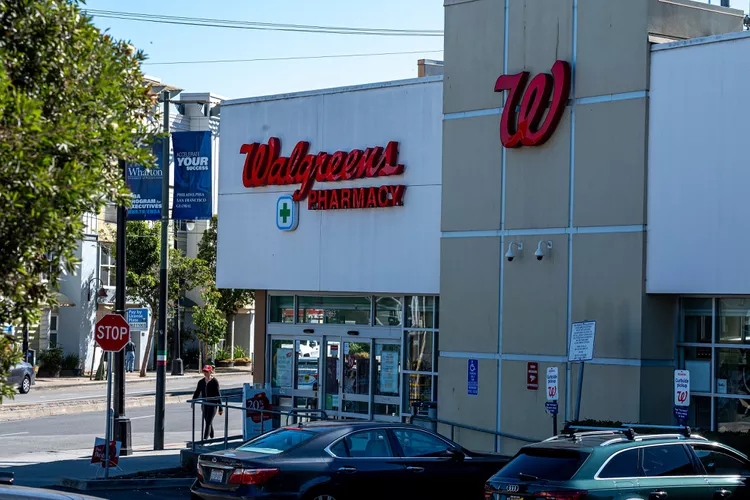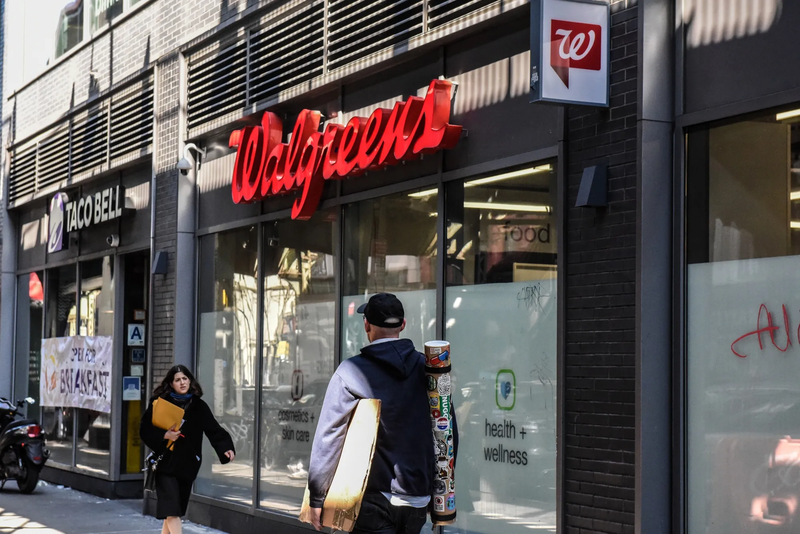Walgreens' $10 Billion Private Equity Sale: A Bold Move or a Desperate Gamble?
Input
Modified
Struggles and Decline: Why Walgreens Chose to Sell Private Equity Takeover: A Risky Bet for Walgreens’ Future What’s Next? The Uncertain Future of Walgreens Under New Ownership

Struggles and Decline: Why Walgreens Chose to Sell
In a move that has sent shockwaves through the retail and healthcare sectors, Walgreens, one of the largest pharmacy chains in the United States, has agreed to be acquired by private equity firm Sycamore Partners for $10 billion. This decision marks a significant shift for the iconic pharmacy brand, which has faced a series of financial challenges in recent years. While Walgreens' struggles have been well-documented, the decision to sell itself to a private equity firm is still seen as a bold and surprising step in the company’s transformation.
Once a leader in the retail pharmacy space, Walgreens has found itself battling declining sales, changing consumer habits, and rising competition. With a deal that could reshape its future, Walgreens is hoping to emerge from this difficult period with a clearer path forward. However, the acquisition raises questions about the future of the company, the fate of its employees, and whether this decision will ultimately help the chain regain its former strength.
For years, Walgreens has faced mounting challenges that have hindered its ability to maintain a strong market position. The company’s struggles have been compounded by a combination of factors, including shifting consumer preferences, increased competition from online pharmacies, and the broader challenges facing brick-and-mortar retailers. As a result, Walgreens has found it increasingly difficult to stay competitive in an ever-evolving retail and healthcare environment.
Despite attempts to modernize and expand its business model, Walgreens has been unable to overcome these obstacles. Its sales have stagnated, and the company has struggled to attract younger consumers who are more likely to turn to digital services or newer healthcare options. The retail pharmacy giant has also faced significant pressure from major competitors like CVS, which has been able to diversify its offerings and adapt more quickly to changes in the healthcare landscape.
In particular, Walgreens’ inability to effectively integrate technology into its operations has been a major hurdle. While the company has made some strides in offering online prescriptions and expanding its delivery services, it has not been able to fully capitalize on the digital transformation sweeping through the retail industry. As a result, Walgreens’ reliance on its brick-and-mortar stores has left it vulnerable to the shifting tides of consumer behavior.

Private Equity Takeover: A Risky Bet for Walgreens’ Future
The decision to sell Walgreens to a private equity firm like Sycamore Partners is a dramatic one, especially given the company’s long history in the pharmacy and healthcare sectors. Private equity firms often invest in struggling companies with the goal of turning them around and eventually selling them for a profit. For Walgreens, this could be a last-ditch effort to reinvigorate its brand and secure a more profitable future.
While private equity buyouts are not uncommon, they often come with significant changes to a company’s structure, management, and operations. This can be both an opportunity and a risk for Walgreens. On the one hand, Sycamore Partners could bring the resources and expertise needed to revitalize the business and modernize its approach to retail and healthcare. On the other hand, private equity ownership often leads to job cuts, restructuring, and a focus on short-term profitability over long-term sustainability.
For Walgreens employees and customers, the potential for changes to the company’s culture and operations is a major concern. In many cases, private equity firms prioritize cost-cutting measures and efficiency gains, which can result in store closures, layoffs, and other disruptions. While Sycamore Partners may have plans to streamline Walgreens’ operations and improve its performance, the path forward may not be without its challenges.
Walgreens' troubles have not been a recent development. In fact, the company has been in a precarious position for years, and its decline has been well-documented. As early as December 2024, industry experts pointed to the fact that Walgreens was in “particularly awful shape,” with significant declines in sales and a loss of market share to competitors like CVS. The company had struggled to adapt to changing market conditions, and its efforts to modernize its business model had not yielded the desired results.
One of the major reasons for Walgreens’ struggles has been its inability to diversify its business beyond traditional retail pharmacy. While other companies in the healthcare and pharmacy space have embraced new technologies and business models, Walgreens has been slow to adopt these changes. This has made it more difficult for the company to compete with rivals that have embraced telehealth, online prescriptions, and other innovations that have become increasingly popular with consumers.
Additionally, Walgreens has faced a decline in foot traffic to its physical stores, which has been exacerbated by the rise of e-commerce and the growing preference for online shopping. Many consumers are now more likely to order prescriptions online or through mobile apps, bypassing the need to visit a physical pharmacy altogether. While Walgreens has made some efforts to enhance its online presence, it has struggled to fully capitalize on this shift in consumer behavior.

What’s Next? The Uncertain Future of Walgreens Under New Ownership
Walgreens is not alone in facing challenges within the retail pharmacy industry. Its main competitor, CVS, has also encountered difficulties in recent years. However, CVS has been more successful in adapting to changing market conditions by diversifying its offerings and expanding into new areas of healthcare. For example, CVS has significantly grown its presence in the health insurance and retail clinic sectors, which has allowed it to remain competitive despite declining sales at its traditional pharmacies.
By contrast, Walgreens has been slower to pivot and diversify its business model. While the company has made some attempts to expand into health services, such as offering in-store clinics and partnering with healthcare providers, it has not been able to establish the same level of success as its competitors. This has left Walgreens in a vulnerable position, particularly as consumers increasingly turn to digital and remote healthcare options.
The sale of Walgreens to Sycamore Partners represents a significant turning point for the company. While it remains to be seen how the private equity firm will handle the restructuring and revitalization of the brand, it is clear that Walgreens’ days as a publicly traded company are over. The company will now enter a new chapter, one that may involve deep changes to its operations, leadership, and customer experience.
For Walgreens, this sale could be an opportunity to emerge from its prolonged struggles and regain its footing in the retail pharmacy market. However, it will need to navigate significant challenges if it hopes to survive in a rapidly changing healthcare landscape. Whether the sale to Sycamore Partners will ultimately prove to be a wise decision or a last-ditch effort to stave off failure is yet to be seen.
The sale of Walgreens to Sycamore Partners marks the end of an era for the pharmacy chain, but it also signals the beginning of a new chapter in the company’s journey. With its long history of struggles and competition from more agile rivals, Walgreens has made the bold decision to go private in an attempt to turn its fortunes around. The decision to sell to a private equity firm is certainly a surprising one, but it may ultimately provide the resources and strategic direction needed to reshape the company and restore its market position. However, the future remains uncertain, and Walgreens will need to carefully navigate the challenges ahead if it hopes to reclaim its place as a leader in the retail pharmacy industry





















